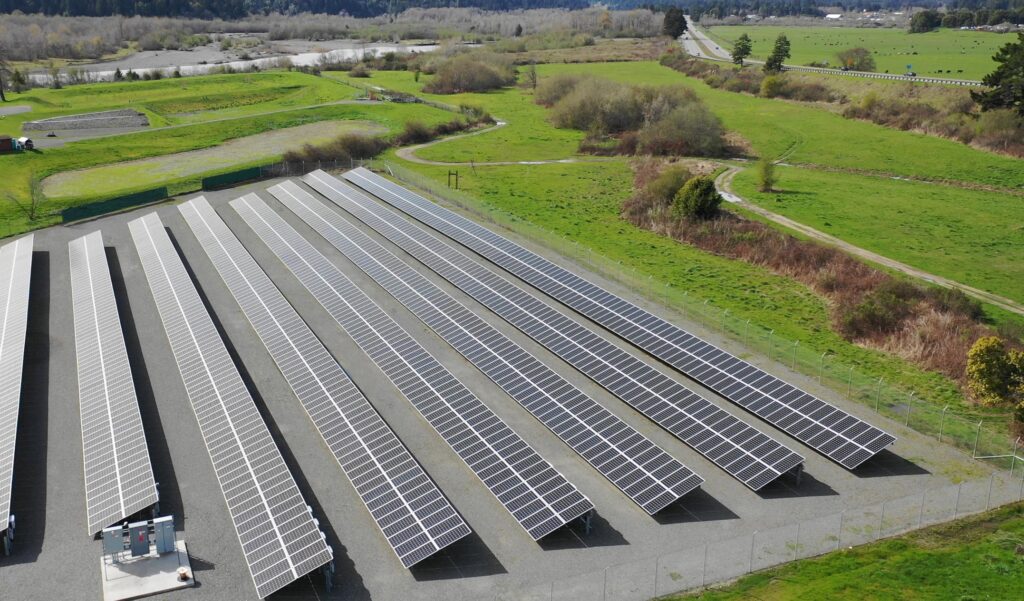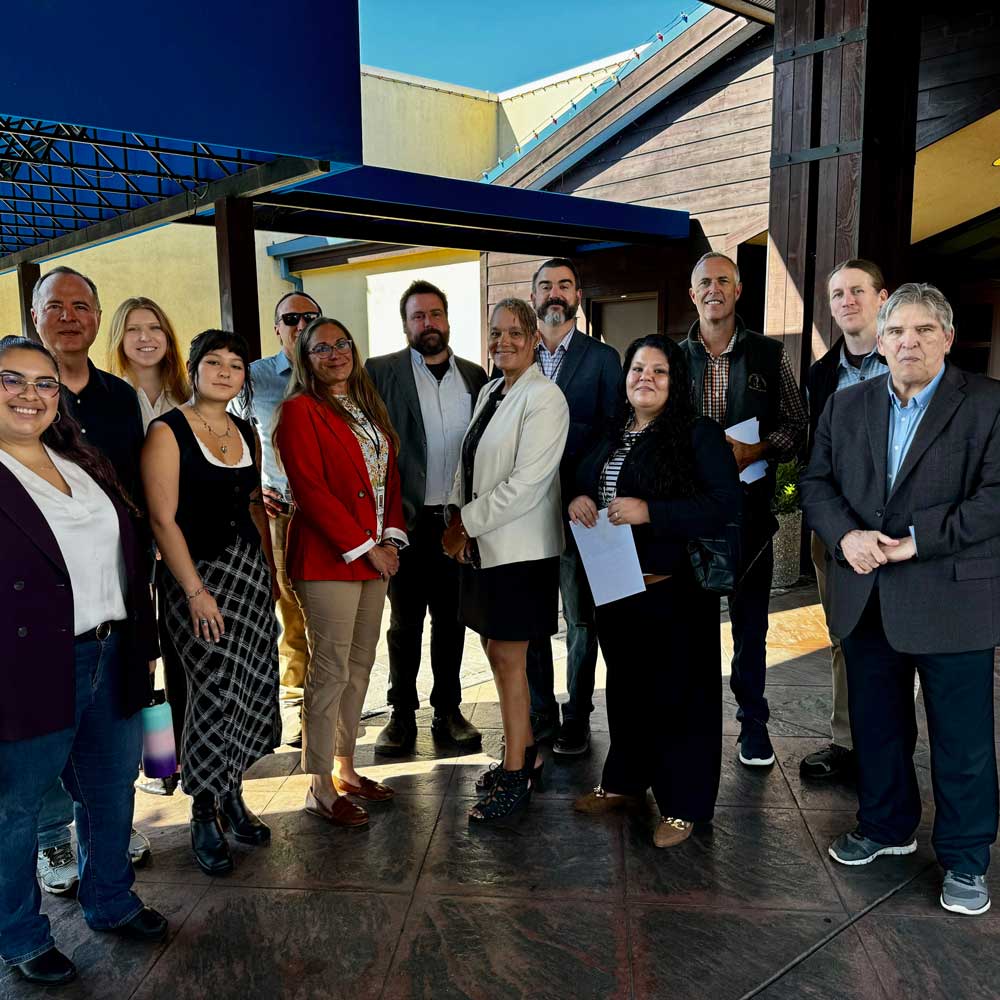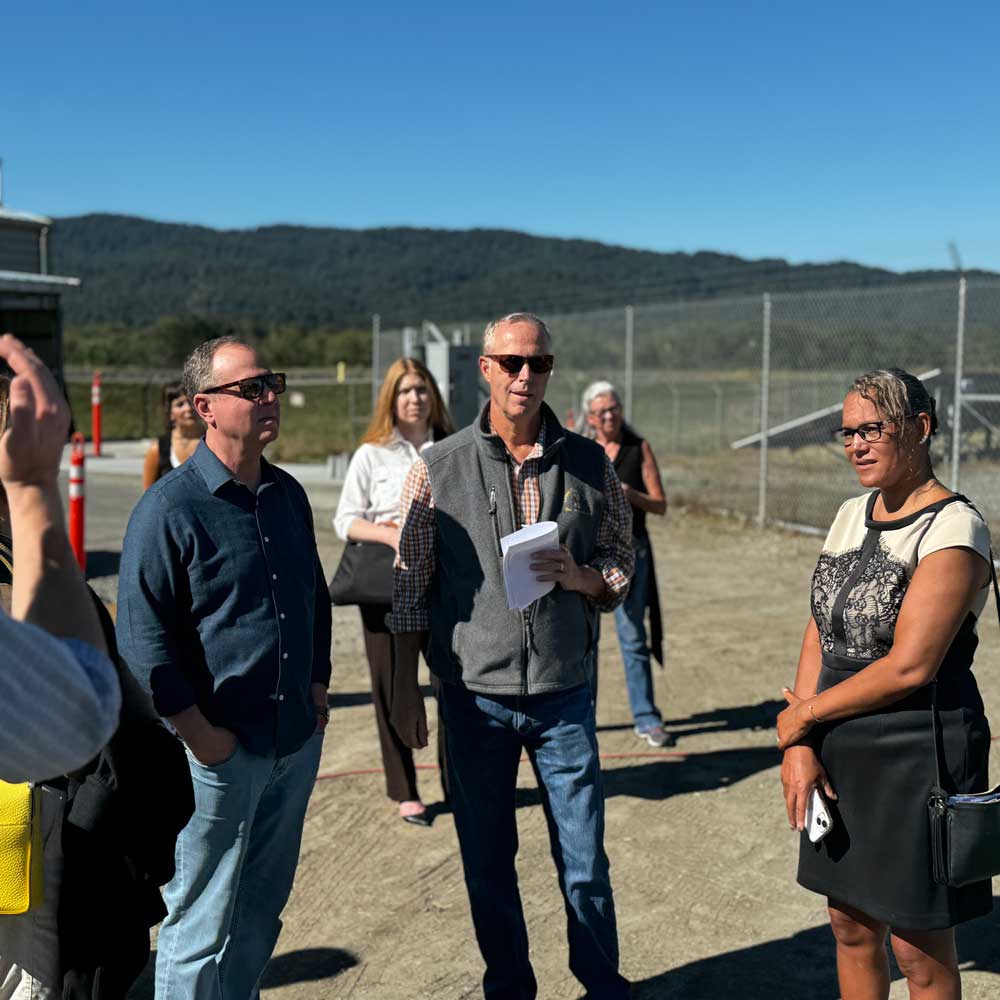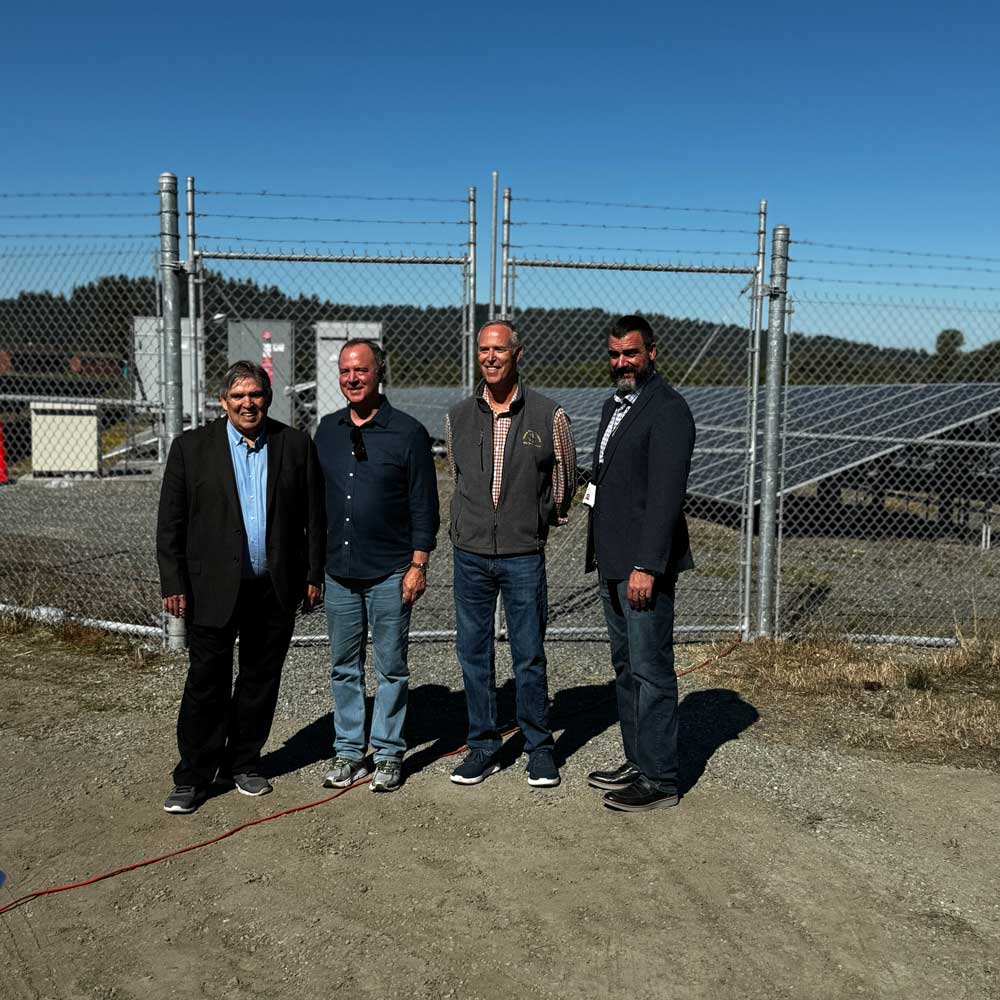
Sustainability & Resilience
Heidi Moore-Guynup
Director Tribal and Government Affairs
Matthew Marshall
Director of Energy Resilience and Business Development
Madison Hunt
Clean Energy Fellow, DOE
Ysabelle Yrad
Sustainability Specialist

Since 2002 the Blue Lake Rancheria Tribe has accelerated transition to a zero-carbon community, for its economic, environmental, health, and overall resilience benefits. The Tribe takes a “lifeline sector” approach to achieving zero-carbon sustainability and resilience. Lifeline sectors include: energy, water, food, communication/IT, and transportation. Through local, regional, state, national, and public/private partnerships – and sound planning and policy that pairs climate mitigation and adaptation in decision-making – the Tribe is exceeding its goals.


Sustainability and Resilience Goals
- Reduce and levelize operational costs (lifeline sector operations and infrastructure).
- Create economic opportunity, including new jobs in the “decarbonized marketplace.”
- Achieve zero net carbon emissions by 2030.
Resilience Spotlight – Energy Development Timeline
Play Station 777 fuel station and convenience store built “solar ready"
Blue Lake Hotel opens, achieves >17% reduction in energy use, a model of hotel energy efficiency
Community-wide energy efficiency upgrades completed
- The Tribal Utility Authority, BLR Department of Energy and Technologies, is formed
- The Tribe begins developing distributed energy resources onsite
- Tribal government fleet adds electric vehicles
- Electric vehicle charging infrastructure installed
- Biodiesel manufacturing plant constructed
- Biodiesel manufacturing begins (using waste oil from Tribe’s kitchens to fuel public transit buses)
- Low-carbon, community microgrid project launched
- 0.5MW solar PV; 1MWh battery storage
- Powers 6-building campus – government offices, economic enterprises, lifeline sector infrastructure
- Provides emergency power to certified American Red Cross shelter
- Achieves significant cost savings and greenhouse gas reductions
- Low-carbon, community microgrid is complete
- The Tribe achieves ~$200,000 annual energy savings
- The Tribe increases employment by 10% with new clean energy and technology jobs
- Tribe’s goal of 40% carbon emission reductions is achieved
- A second low-carbon, facility microgrid at the Play Station 777 fuel station and convenience store is launched
- Uses the “solar ready” canopy and other infrastructure (from 2006)
- 60kW solar PV, 169kWh battery storage, advanced building controls; islanding controls
- Replicable “resilience package” for small commercial buildings
- Add 1MWh battery storage to community microgrid
- Commission fuel station and convenience store “resilience package” microgrid
- Continue ongoing energy efficiency upgrades
- Add solar power to community microgrid
Continue zero carbon resilience and economic
projects
BLR supports thousands during wide scale power outage caused by a 6.4 earthquake
- Complete energy efficiency remodel of the Blue Lake Hotel
- Purchase two hybrid vans to support Tribal health and wellness
- Power Islands In The Storm is published by The Monocle Companion
- Break Ground on Ta'm Resilience Campus
- Commission installation of new Tesla Megapack battery system
- BLR and other Tribal partners are awarded $88 million from the Dept. of Energy to support the Tribal Energy Resiliency and Sovereignty (TERAS) Project
Continue efficiency and energy lifeline sector resilience work
The Tribe achieves net zero carbon emissions

Sustainability and Resilience Partnerships
The Tribe’s sustainability and resilience projects would not be possible without partners.
Here is an illustrative list of entities who have contributed and collaborated with the Tribe across a range of sustainability and resilience projects, programs, and innovations.
The Tribe is grateful for these partnerships, and the accomplishments achieved together.
Illustrative Partners
- American Red Cross
- Bureau of Indian Affairs
- California Energy Commission
- California Highway Patrol
- California Public Utilities Commission
- CalOES
- City of Blue Lake
- Colburn Electric
- Congressman Jared Huffman’s Office
- FEMA
- GHD Engineering
- Humboldt Bay Municipal Water District
- Humboldt County OES
- Humboldt State University
- Humboldt State University Sponsored Programs Foundation
- Idaho National Laboratory
- Kernen Construction
- Lawrence Berkeley National Laboratory
- Mad River Alliance
- National Renewable Energy Laboratory
- NOAA
- Pacific Gas and Electric Company
- Pacific Offshore Wind Consortium
- REC Solar
- Redwood Coast Energy Authority
- Redwood CORE Hub
- Redwood Rise
- Schatz Energy Research Center
- Siemens
- Tesla
- United Indian Health Services
- U.S. Army Corps of Engineers
- U.S. Bureau of Reclamation
- U.S. Department of Energy; Office of Indian Energy Policies and Programs
- U.S. Department of Agriculture
- U.S. Department of Commerce; Economic Development Administration
- U.S. Environmental Protection Agency
- U.S. Department of Homeland Security
- U.S. Department of Interior
- West Coast Ocean Alliance

Select Recognition for Sustainability and Resilience
2023
“The Gold Award” California Emergency Services Association
2018
“Project of the Year for DER Integration” POWERGRID International and DistribuTECH
2017
“Whole Community Preparedness Award” FEMA
2015-2016
“Climate Action Champion” White House and U.S. Department of Energy
